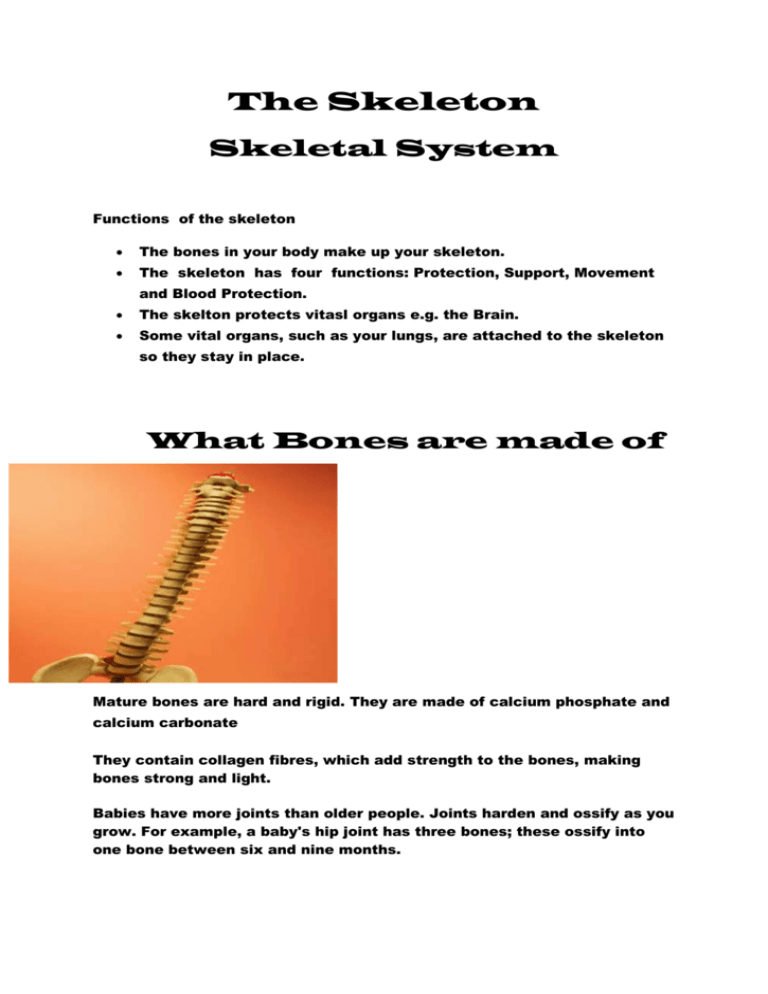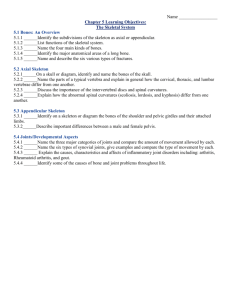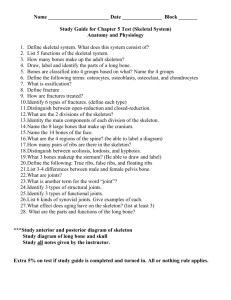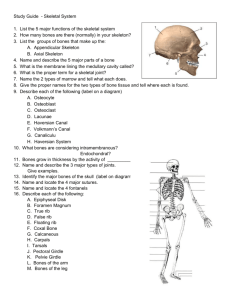The Skeleton poster
advertisement

The Skeleton Skeletal System Functions of the skeleton The bones in your body make up your skeleton. The skeleton has four functions: Protection, Support, Movement and Blood Protection. The skelton protects vitasl organs e.g. the Brain. Some vital organs, such as your lungs, are attached to the skeleton so they stay in place. What Bones are made of Mature bones are hard and rigid. They are made of calcium phosphate and calcium carbonate They contain collagen fibres, which add strength to the bones, making bones strong and light. Babies have more joints than older people. Joints harden and ossify as you grow. For example, a baby's hip joint has three bones; these ossify into one bone between six and nine months. Parts of the skeleton The skeleton has two parts, the axial skeleton and the appendicular skeleton. Diffrent types of bone There are five types of bone: long bones short bones flat bones irregular bones sesamoid bones. Long bones are the bones in the arms and legs such as the femur, fibula and tibia and the humerus, ulna and radius. Short bones are the bones in the wrist (the carpals) and ankle (the tarsals). Flat bones are the skull, scapula and hip bone. Irregular bones are the vertebrae in the spine and the facial bones. Sesamoid bones are in tendons. For example the kneecap or patella bone in the quadriceps tendon. Summary The skeleton has four functions: protection, support, movement and blood production. The skeleton has two parts: the axial skeleton, which forms the central core; and the appendicular skeleton, which consists of the limbs and links the limbs to the central core. The body has different types of joints in it. Some don't move at all; their main role is protection. Some move a little bit, and some move a lot. The ones that move a lot are called synovial joints



